 Technology peripherals
Technology peripherals AI
AI Using CNN as the basic model, the deformable convolution InternImage achieves a new record in detection and segmentation!
Using CNN as the basic model, the deformable convolution InternImage achieves a new record in detection and segmentation!The booming development of large-scale visual Transformers in recent years has pushed the performance boundaries in the field of computer vision. Vision Transformer models defeat convolutional neural networks by expanding the number of model parameters and training data. Researchers from Shanghai Artificial Intelligence Laboratory, Tsinghua University, Nanda, SenseTime, and Hong Kong Chinese summarized the gaps between convolutional neural networks and visual Transformers. From an operator level, traditional CNNs operators lack long-distance dependencies and adaptive spatial aggregation capabilities; from a structural level, traditional CNNs structures lack advanced components.
In response to the above technical problems, Researchers from Pujiang Laboratory, Tsinghua University and other institutions innovatively proposed a large-scale model based on convolutional neural networks, called For InternImage, it uses sparse dynamic convolution as the core operator and achieves adaptive spatial aggregation by inputting relevant information as a condition. InternImage enables learning more powerful and robust large-scale parameter patterns from massive data by reducing the strict inductive bias of traditional CNNs. Its effectiveness has been verified on visual tasks including image classification, object detection and semantic segmentation. It has achieved competitive results in challenging benchmark data sets including ImageNet, COCO and ADE20K. At the same parameter level, it has surpassed the visual Transformer structure and provided a new direction for large image models.

- ## Paper link: https://arxiv.org/abs/2211.05778
- Open source code: https://github.com/OpenGVLab/InternImage

 ##Limitations of traditional convolutional neural networks
##Limitations of traditional convolutional neural networks
(1) From the operator level, the multi-head attention mechanism of visual Transformer has long-distance dependencies And adaptive spatial aggregation capabilities, benefiting from this, the visual Transformer can learn from massive data more powerful and robust representations than CNN networks.
(2) From the perspective of model architecture, in addition to the multi-head attention mechanism, the visual Transformer has more advanced modules that the CNN network does not have, such as Layer Normalization (LN), feedforward Neural network FFN, GELU, etc.
Although some recent work attempts to use large kernel convolutions to obtain long-distance dependencies, they are still far from the state-of-the-art visual Transformers in terms of model scale and accuracy.
Further expansion of deformable convolutional networks
InternImage improves the scalability of convolutional models and alleviates inductive bias by redesigning operators and model structures , including (1) DCNv3 operator, which introduces shared projection weights, multi-group mechanisms and sampling point modulation based on the DCNv2 operator. (2) Basic module, integrating advanced modules as the basic module unit for model construction (3) Module stacking rules, standardizing the width, depth, number of groups and other hyper-parameters of the model when expanding the model.This work is dedicated to building a CNN model that can effectively scale to large-scale parameters. First, the deformable convolution operator DCNv2 is redesigned to adapt to long-distance dependencies and weaken inductive bias; then, the adjusted convolution operator is combined with advanced components to establish a basic unit module; finally, explore and implement Stacking and scaling rules of modules to build a base model with large-scale parameters and powerful representations can be learned from massive data. At the operator level, this study first summarizes the main differences between the convolution operator and other mainstream operators. The current mainstream Transformer series models mainly rely on the multi-head self-attention mechanism to achieve large model construction. Its operators have long-distance dependencies, which are sufficient to construct connection relationships between long-distance features, and also have spatial adaptive aggregation capabilities to achieve pixel-level construction. Relationship. However, this global attention mechanism has huge computing and storage requirements, making it difficult to achieve efficient training and rapid convergence. Likewise, local attention mechanisms lack long-range feature dependence. Large-core dense convolution has no spatial aggregation ability, so it is difficult to overcome the natural inductive bias of convolution, which is not conducive to expanding the model. Therefore, InternImage designs dynamic sparse convolution operators to achieve global attention effects without wasting too much computing and storage resources, achieving efficient training. Based on the DCNv2 operator, the researchers redesigned, adjusted and proposed the DCNv3 operator. Specific improvements include the following parts. (1) Shared projection weight. Similar to conventional convolution, different sampling points in DCNv2 have independent projection weights, so its parameter size is linearly related to the total number of sampling points. In order to reduce parameter and memory complexity, we draw on the idea of separable convolution and use position-independent weights to replace the grouping weights. The projection weights are shared between different sampling points, and all sampling position dependencies are retained. (2) Introduce multi-group mechanism. Multi-group design was first introduced in grouped convolution and is widely used in Transformer's multi-head self-attention. It can be paired with adaptive spatial aggregation to effectively improve the diversity of features. Inspired by this, researchers divide the spatial aggregation process into several groups, and each group has an independent sampling offset. Since then, different groups of a single DCNv3 layer have different spatial aggregation patterns, resulting in rich feature diversity. (3) Sampling point modulation scalar normalization. In order to alleviate the instability problem when the model capacity is expanded, the researchers set the normalization mode to Softmax normalization on a sample-by-sample basis. This not only makes the training process of large-scale models more stable, but also constructs a model of all sampling points. connection relationship. After building the DCNv3 operator, you first need to standardize the overall details of the basic modules and other layers of the model, and then explore the Stacking strategy to build InternImage. Finally, models with different parameter amounts are constructed according to the expansion rules of the proposed model. Basic module. Different from the bottleneck structure widely used in traditional CNN, this study adopts a basic module closer to ViTs, equipped with more advanced components, including GELU, layer normalization (LN) and feed-forward network (FFN), which have been Proven to be more efficient in a variety of vision tasks. The details of the basic module are shown in the figure above, where the core operator is DCNv3, which predicts the sampling bias and modulation scale by passing the input features through a lightweight separable convolution. For other components, follow the same design as a normal Transformer. Overlay rules. In order to clarify the block stacking process, this study proposes two module stacking rules. The first rule is the number of channels in the last three stages Model scaling rules. Based on the optimal model under the above constraints, this study normalized two scaling dimensions of the network model: depth D (number of module stacks) and width C (number of channels), using the restriction factor Following this rule, this study constructed models of different scales, namely InternImage-T, S, B, L, and XL. The specific parameters are: Image classification experiment: By using 427M public data sets: Laion-400M, YFCC15M, CC12M, InternImage-H achieves an accuracy of 89.2% on ImageNet-1K. Object detection: Taking the largest InternImage-H as Backbone network, and using DINO as the basic detection framework, pre-trained the DINO detector on the Objects365 data set, and then fine-tuned on COCO. The model achieved an optimal result of 65.4% in the target detection task, breaking through the performance boundary of COCO target detection. Semantic Segmentation: On semantic segmentation, InternImage-H It also achieved very good performance, and combined with Mask2Former achieved the current highest of 62.9% on ADE20K. This study proposes InternImage, a new CNN-based large-scale basic model that can Powerful representations are provided for versatile vision tasks such as image classification, object detection, and semantic segmentation. The researchers adjusted the flexible DCNv2 operator to meet the needs of the basic model, and developed a series of blocking, stacking and scaling rules based on the core operator. Extensive experiments on object detection and semantic segmentation benchmarks have verified that InternImage can achieve equivalent or better performance than well-designed large-scale visual Transformers trained on large amounts of data, indicating that CNN is also a considerable step in large-scale visual basic model research. choose. Still, large-scale CNNs are still in their early stages of development, and the researchers hope InternImage can serve as a good starting point. 

 , which is determined by the number of channels in the first stage
, which is determined by the number of channels in the first stage Decision, that is,
Decision, that is,  ; The second rule is that the group number of each module corresponds to the number of channels in each stage, that is,
; The second rule is that the group number of each module corresponds to the number of channels in each stage, that is,  ; The third, stacking The mode is fixed to "AABA", that is, the number of module stacks in stages 1, 2 and 4 is the same
; The third, stacking The mode is fixed to "AABA", that is, the number of module stacks in stages 1, 2 and 4 is the same  , and not greater than that in stage 3
, and not greater than that in stage 3  . Therefore, a model with a parameter volume of 30M is chosen as the basis. The specific parameters are: the number of Steam output channels
. Therefore, a model with a parameter volume of 30M is chosen as the basis. The specific parameters are: the number of Steam output channels is 64; the number of groups is 1/16 of the number of input channels in each stage. The number of module stacks
is 64; the number of groups is 1/16 of the number of input channels in each stage. The number of module stacks  in stages 1, 2, and 4 is 4, the number of module stacks
in stages 1, 2, and 4 is 4, the number of module stacks  in stage 3 is 18, and the model parameters are 30M.
in stage 3 is 18, and the model parameters are 30M.  and
and  scale the depth and width along the composite coefficient
scale the depth and width along the composite coefficient  , i.e.,
, i.e.,  , where
, where  , according to experiments the optimal setting is
, according to experiments the optimal setting is  .
. 
Experimental results



Conclusion
The above is the detailed content of Using CNN as the basic model, the deformable convolution InternImage achieves a new record in detection and segmentation!. For more information, please follow other related articles on the PHP Chinese website!
 从VAE到扩散模型:一文解读以文生图新范式Apr 08, 2023 pm 08:41 PM
从VAE到扩散模型:一文解读以文生图新范式Apr 08, 2023 pm 08:41 PM1 前言在发布DALL·E的15个月后,OpenAI在今年春天带了续作DALL·E 2,以其更加惊艳的效果和丰富的可玩性迅速占领了各大AI社区的头条。近年来,随着生成对抗网络(GAN)、变分自编码器(VAE)、扩散模型(Diffusion models)的出现,深度学习已向世人展现其强大的图像生成能力;加上GPT-3、BERT等NLP模型的成功,人类正逐步打破文本和图像的信息界限。在DALL·E 2中,只需输入简单的文本(prompt),它就可以生成多张1024*1024的高清图像。这些图像甚至
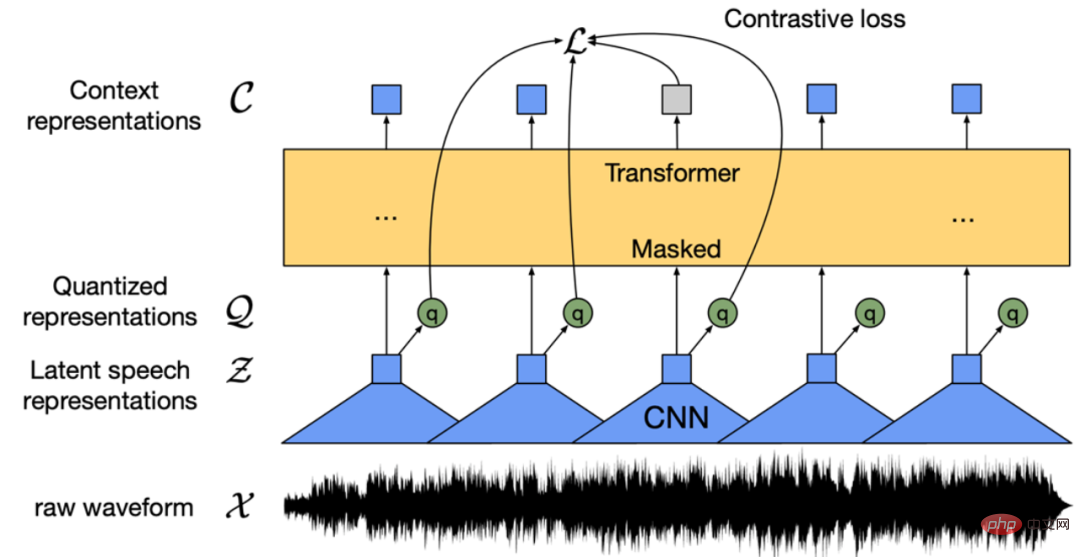 找不到中文语音预训练模型?中文版 Wav2vec 2.0和HuBERT来了Apr 08, 2023 pm 06:21 PM
找不到中文语音预训练模型?中文版 Wav2vec 2.0和HuBERT来了Apr 08, 2023 pm 06:21 PMWav2vec 2.0 [1],HuBERT [2] 和 WavLM [3] 等语音预训练模型,通过在多达上万小时的无标注语音数据(如 Libri-light )上的自监督学习,显著提升了自动语音识别(Automatic Speech Recognition, ASR),语音合成(Text-to-speech, TTS)和语音转换(Voice Conversation,VC)等语音下游任务的性能。然而这些模型都没有公开的中文版本,不便于应用在中文语音研究场景。 WenetSpeech [4] 是
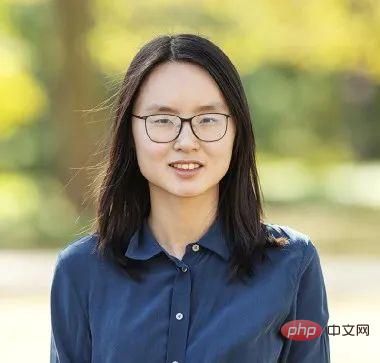 普林斯顿陈丹琦:如何让「大模型」变小Apr 08, 2023 pm 04:01 PM
普林斯顿陈丹琦:如何让「大模型」变小Apr 08, 2023 pm 04:01 PM“Making large models smaller”这是很多语言模型研究人员的学术追求,针对大模型昂贵的环境和训练成本,陈丹琦在智源大会青源学术年会上做了题为“Making large models smaller”的特邀报告。报告中重点提及了基于记忆增强的TRIME算法和基于粗细粒度联合剪枝和逐层蒸馏的CofiPruning算法。前者能够在不改变模型结构的基础上兼顾语言模型困惑度和检索速度方面的优势;而后者可以在保证下游任务准确度的同时实现更快的处理速度,具有更小的模型结构。陈丹琦 普
 解锁CNN和Transformer正确结合方法,字节跳动提出有效的下一代视觉TransformerApr 09, 2023 pm 02:01 PM
解锁CNN和Transformer正确结合方法,字节跳动提出有效的下一代视觉TransformerApr 09, 2023 pm 02:01 PM由于复杂的注意力机制和模型设计,大多数现有的视觉 Transformer(ViT)在现实的工业部署场景中不能像卷积神经网络(CNN)那样高效地执行。这就带来了一个问题:视觉神经网络能否像 CNN 一样快速推断并像 ViT 一样强大?近期一些工作试图设计 CNN-Transformer 混合架构来解决这个问题,但这些工作的整体性能远不能令人满意。基于此,来自字节跳动的研究者提出了一种能在现实工业场景中有效部署的下一代视觉 Transformer——Next-ViT。从延迟 / 准确性权衡的角度看,
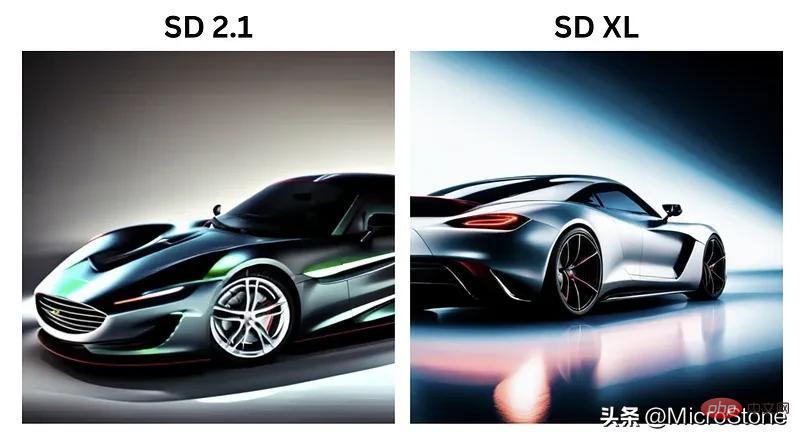 Stable Diffusion XL 现已推出—有什么新功能,你知道吗?Apr 07, 2023 pm 11:21 PM
Stable Diffusion XL 现已推出—有什么新功能,你知道吗?Apr 07, 2023 pm 11:21 PM3月27号,Stability AI的创始人兼首席执行官Emad Mostaque在一条推文中宣布,Stable Diffusion XL 现已可用于公开测试。以下是一些事项:“XL”不是这个新的AI模型的官方名称。一旦发布稳定性AI公司的官方公告,名称将会更改。与先前版本相比,图像质量有所提高与先前版本相比,图像生成速度大大加快。示例图像让我们看看新旧AI模型在结果上的差异。Prompt: Luxury sports car with aerodynamic curves, shot in a
 什么是Transformer机器学习模型?Apr 08, 2023 pm 06:31 PM
什么是Transformer机器学习模型?Apr 08, 2023 pm 06:31 PM译者 | 李睿审校 | 孙淑娟近年来, Transformer 机器学习模型已经成为深度学习和深度神经网络技术进步的主要亮点之一。它主要用于自然语言处理中的高级应用。谷歌正在使用它来增强其搜索引擎结果。OpenAI 使用 Transformer 创建了著名的 GPT-2和 GPT-3模型。自从2017年首次亮相以来,Transformer 架构不断发展并扩展到多种不同的变体,从语言任务扩展到其他领域。它们已被用于时间序列预测。它们是 DeepMind 的蛋白质结构预测模型 AlphaFold
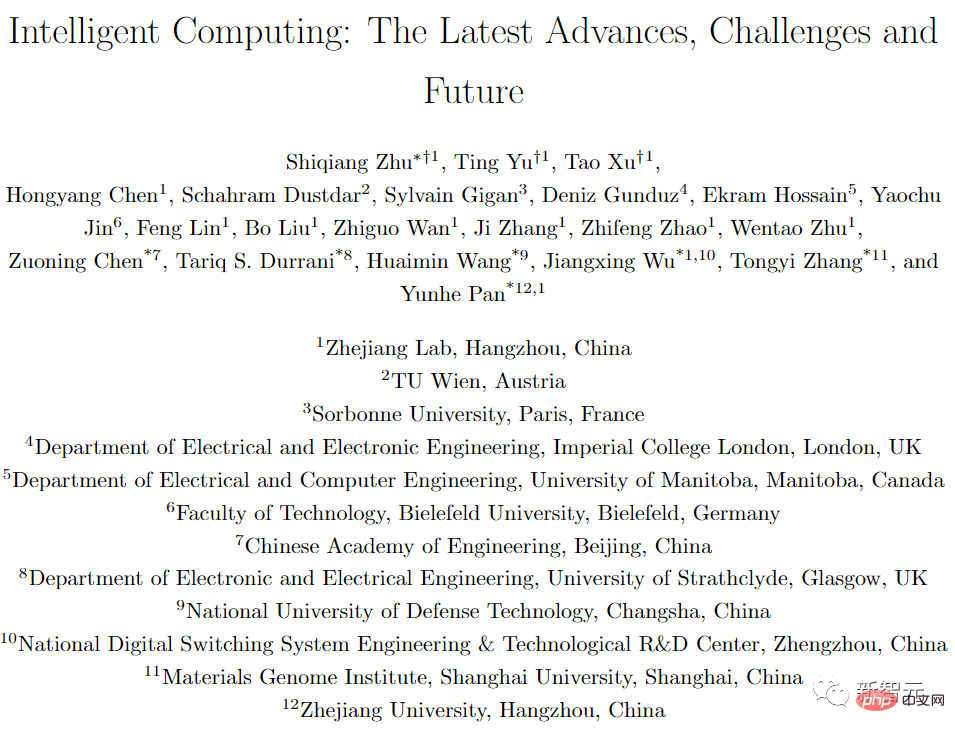 五年后AI所需算力超100万倍!十二家机构联合发表88页长文:「智能计算」是解药Apr 09, 2023 pm 07:01 PM
五年后AI所需算力超100万倍!十二家机构联合发表88页长文:「智能计算」是解药Apr 09, 2023 pm 07:01 PM人工智能就是一个「拼财力」的行业,如果没有高性能计算设备,别说开发基础模型,就连微调模型都做不到。但如果只靠拼硬件,单靠当前计算性能的发展速度,迟早有一天无法满足日益膨胀的需求,所以还需要配套的软件来协调统筹计算能力,这时候就需要用到「智能计算」技术。最近,来自之江实验室、中国工程院、国防科技大学、浙江大学等多达十二个国内外研究机构共同发表了一篇论文,首次对智能计算领域进行了全面的调研,涵盖了理论基础、智能与计算的技术融合、重要应用、挑战和未来前景。论文链接:https://spj.scien
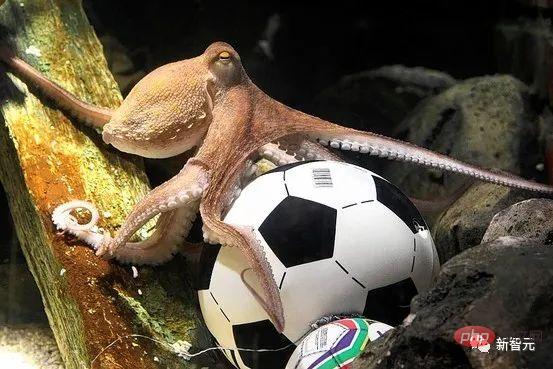 AI模型告诉你,为啥巴西最可能在今年夺冠!曾精准预测前两届冠军Apr 09, 2023 pm 01:51 PM
AI模型告诉你,为啥巴西最可能在今年夺冠!曾精准预测前两届冠军Apr 09, 2023 pm 01:51 PM说起2010年南非世界杯的最大网红,一定非「章鱼保罗」莫属!这只位于德国海洋生物中心的神奇章鱼,不仅成功预测了德国队全部七场比赛的结果,还顺利地选出了最终的总冠军西班牙队。不幸的是,保罗已经永远地离开了我们,但它的「遗产」却在人们预测足球比赛结果的尝试中持续存在。在艾伦图灵研究所(The Alan Turing Institute),随着2022年卡塔尔世界杯的持续进行,三位研究员Nick Barlow、Jack Roberts和Ryan Chan决定用一种AI算法预测今年的冠军归属。预测模型图


Hot AI Tools

Undresser.AI Undress
AI-powered app for creating realistic nude photos

AI Clothes Remover
Online AI tool for removing clothes from photos.

Undress AI Tool
Undress images for free

Clothoff.io
AI clothes remover

AI Hentai Generator
Generate AI Hentai for free.

Hot Article

Hot Tools

Atom editor mac version download
The most popular open source editor

Notepad++7.3.1
Easy-to-use and free code editor

SAP NetWeaver Server Adapter for Eclipse
Integrate Eclipse with SAP NetWeaver application server.

VSCode Windows 64-bit Download
A free and powerful IDE editor launched by Microsoft

Safe Exam Browser
Safe Exam Browser is a secure browser environment for taking online exams securely. This software turns any computer into a secure workstation. It controls access to any utility and prevents students from using unauthorized resources.





